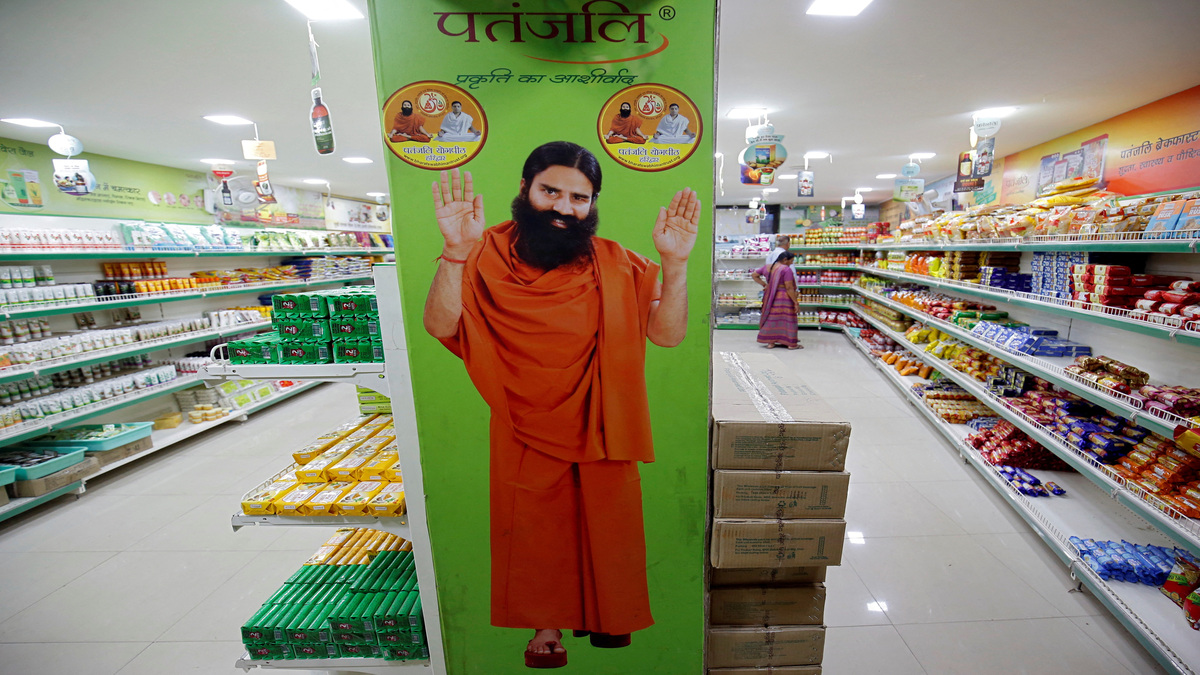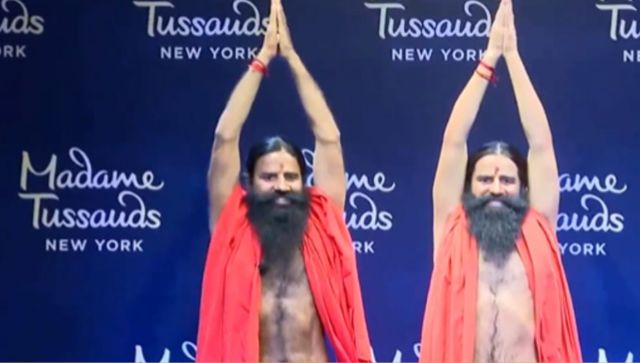Baba Ramdev’s call for “deshbhakt” Indians to choose his Dant Kanti toothpaste raises an intriguing question.
How much do patriots know about dental health in India? Probably very little. Many people think dentists are boring and consider toothpaste banal.
Think again. From the ironies of history to the marketing tactics of today, dentistry and its discontents offer some compelling lessons. Oral hygiene also provides vital clues to economic and gender disparities. Here are four things you can learn about India through a tube of toothpaste.
1. ICE CREAM IS A CATALYST
India’s history of modern dentistry springs from a curious fact. It is intimately connected with ice cream.
Rewind to 1909, and follow the steps of Rafiuddin Ahmed. Seeking an education in the United States, this restless young man from Bengal talks his way onto an Italian ship bound for New York. After making contact with Irish activists at the NYC office of Friends of Freedom for India, he aims for a degree in dentistry at the State University of Iowa – mostly because the fees are cheaper and he can find plenty of part-time work. One summer, a friend invites him to work at an ice cream plant and soda fountain at a luxury resort at Spirit Lake, Iowa.
That creamy apprenticeship proves crucial. When Dr Ahmed finally graduates, heads home, and sets up a dental practice in Calcutta in 1920, he also launches an ice cream parlour. Dr Ahmed calls it “New York Soda Fountain,” possibly in homage to the iconic chain of Schrafft’s — where pretty Irish waitresses caught the eye of their compatriots at the Friends of Freedom for India. The idea was to funnel ice cream profits into subsidies for India’s first dental college, which takes off in Dr Ahmed’s private chambers.
Located in the teeming Dharmatala area, New York Soda Fountain quickly finds fans among middle class Bengalis. Bearers wear white uniforms. Vanilla and mango flavours are popular. Sometimes Dr Ahmed himself scoops ice cream at the counter, and supervises the vendors in Howrah and Sealdah stations.
“Boozers really liked that ice cream soda. It covered the bad odour of country liquor,” recalls novelist Supriyo Chowdhury.
Was it all a case of sophisticated backward integration? In other words, did Dr Ahmed know that the refined sugar in ice cream could cause cavities, and thus help his dental practice to flourish?
Nothing of the kind, responds his family. “That didn’t strike him at all. Now, we know that ice cream and cold drinks cause cavities. Had he known, he would have done things differently,” says Dr Zarina Aliya, a dental surgeon in Baruipur and granddaughter of Dr Ahmed.
“This was a time of entrepreneurship,” she adds. “He was a very self-made man. He wanted every citizen to get good dental treatment. Dentistry was chiefly for the rich and famous in those days."
Dr Ahmed’s name adorns the biggest government college of dentistry in Kolkata, where West Bengal Chief Minister Mamata Banerjee has decreed free treatment for all. But the wholesome nature of New York Soda Fountain curdled in the 1960s, long after Dr Ahmed turned it over to new owners. (He passed away in 1965.) It became a rendezvous site for prostitutes and traders, as well as a louche hang-out for many artists, such as Ganesh Pyne and Shuvaprasanna Bhattacharya.
“It was a great meeting point. New York Soda Fountain was the center of our time,” says Bhattacharya, who cooled his heels there from 1965 to 1979. By that time, the place had phased out ice cream and emphasised snacks like fish fry. Then it closed down. Today, the space is occupied by a mattress store. Its name, “Foam Junction,” still bears a trace of that bubbly ice cream soda.
Among multinationals, Hindustan Unilever Limited stands out for its continuing fondness for the toothpaste and ice cream combo. According to Euromonitor International, HUL’s Close-up and Signal figure among the top four toothpaste brands in India. At the same time, Unilever is flogging Kwality Wall’s ice cream and Cornetto, along with the more patrician Magnum ice cream.
2. RURAL MARKETING REQUIRES SUSTAINED ENGAGEMENT
One day in Orissa, villagers came upon a giant fake tooth displayed in an open field. Two teams were assembled. One was given shields and assigned to protect the tooth. The other team pelted the tooth with little white balls, seeking to overwhelm the defense. The skirmish ended with a friendly group photo, swiftly enlarged into a billboard. “This village is Calci-Locked!” said the sign. The digital smiles masked a silent message: No Trespassing on Colgate Turf.
In India, Colgate is trying hard to shield its whopping 54 percent market share. Last year, to counter a Dabur surge in Orissa, rural marketers from Mumbai-based Anugrah Madison implemented this surreal campaign, which recently won a Silver Medal from the Rural Marketing Association of India (RMAI). Colgate “wanted to go very aggressive in terms of reaching out to consumers,” explains Prashant Mandke, head of the rural marketing firm. Extending to some 400 villages, the initiative also included a mobile phone twist. Winners received a 20-rupee top-up if they answered questions correctly about Colgate through IVR, an automated voice recording.
Aural recall packs more punch than the written word.
“SMS is not the answer. The answer is IVR, as they are able to listen to something,” says RMAI president Sanjay Kaul. Alternatively, call centers staffed with dentists proved unprofitable and unworkable due to the high volume of calls, says Girish Chaturvedi at netCORE, a communications and marketing firm.
But most analysts argue that low-cost phone tactics alone will not sway the masses — whatever product is on offer. “If you start with mobile, it would not work. Indian consumers are more prone to like face-to- face interaction. People like to touch the product,” says Abhishek A, assistant professor of marketing at the Indian Institute of Management in Ahmedabad.
That’s why marketing teams are still buzzing around India, actively engaging consumers in quizzes, magic shows, railway car surveys, and giveaways at religious gatherings. Follow-up comes via phone. “Activation is creating the need. Mobile is establishing the brand,” chants Chaturvedi.
3. STRONG ATTACHMENT TO TRADITION CAN BEDEVIL OR BENEFIT MODERN BRANDS
James Wynbrandt makes an important point at the start of his entertaining book, The Excruciating History of Dentistry. “As civilisation arose, differences in diets of the wealthy and poor were evidenced in the state of their teeth. Typically, the richer the individual, the poorer their oral health, as decay made inroads in the human mouth,” Wynbrandt writes.
India was no exception. In poor rural areas, the traditionally low intake of refined sugars and the protective qualities of neem enhanced bright smiles. The custom of chewing a neem twig survives in many places today, despite the onslaught of mass-produced brushes and toothpaste. “It’s a very good agent for binding gums with teeth. This is the knowledge that has been passed down for generations,” notes IIMA assistant professor Abhishek. In devotional stories and songs, Radha invites Krishna to clean his teeth with a twig.
“It’s tasty. It’s cheaper,” says 30 year old Shiv Prasad, a Bihari who earns Rs 6,500 per month at the Alliance Jute Mill in Jagatdal, West Bengal. He buys seven twigs for three rupees from Upinder, a 75-year- old Bihari who chops neem twigs in front of the mill’s blue gate. A dense crowd of men jostle for their twigs. “Poor people don’t have the money to buy Colgate,” says Upinder.
According to RMAI, some 250 million Indians do not use toothpaste. “The deeper you go in the market, the higher the resistance to change,” notes Ankur Bisen, senior vice president at Technopak. Some families prefer ash made of burned rice husks, cow dung, or other ingredients, both for cleaning the teeth and applying a lingering gum massage. While the abrasive twigs and ash can harm tooth enamel or make gums bleed, the same holds for overly vigorous encounters with a toothbrush. “More harm is done every day, with people not aware of the particular way of brushing,” says Dr Barin Roy, a senior dentist in Kolkata who applied his talents to ministers and poets alike.
In the global context, India’s per capita consumption of toothpaste is “pathetically low,” as described by one industry veteran. According to Euromonitor International, India consumes just a quarter of the toothpaste used per capita in Brazil, and just half of that in China. Nielsen India reports that urban per capita toothpaste consumption stands at 270 grams, compared to 85 grams in rural areas.
But diets are changing. Sugary biscuits, colas, syrups, ice cream, and other dental enemies are vigorously marching through villages, having triumphed in Indian cities. Meanwhile, city travel and overseas migration have also spurred adoption of mass-produced toothbrush and toothpaste back in the village, says Anju Joseph, chief operating officer at Quantum Qualitative Research.
Still, the twig carries a certain element of style, especially for the male population — much like a rapper’s toothpick.
“Have you noticed that guys like to walk around the village and chew on twigs? You can’t do that with a mouth full of foam,” says Kolkata-based author Rimi Chatterjee.
4. WOMEN REQUIRE MORE FREEDOM AND CAPITAL TO PRACTICE THEIR PROFESSION
The Indian Dental Association (IDA) has some surprising statistics up its sleeve. According to Dr Ashok Dhoble, secretary general of the IDA, 80-90 percent of recent dental graduates are women.
The number of dental colleges in India has tripled over the last decade, now topping 300. But out of India’s 25,000 dental students who pass out each year, only about 10,000 people choose to practice dentistry, says Dr Alias Thomas, former IDA president.
Many women graduates face considerable pressure to renounce a dental career and focus on their spouses and children. The steep costs of setting up a high-tech solo practice, combined with the low salaries offered in a group practice, also serve as twin disincentives. Surely, Dr Ahmed would mourn this turn of events. It’s a great loss in human resources.
Meanwhile, less than 20 percent of India’s 1 lakh 25,000 trained dentists are practicing in the countryside. That leaves considerable room for quacks.
Only 4 percent of the Indian population visited a trained dentist last year. But that figure wouldn’t bother Baba Ramdev, who does not seem fond of men in white coats. Ditto for purveyors of Dant Kanti. “All the dental problems have been solved with this. You need not go to the dentist,” advises Sadashiva Johari, manager of Patanjali Chikitsalaya in Bangalore’s HSR Layout.
Margot Cohen is a writer from New York. Her interest in India follows previous reporting stints in the Philippines, Indonesia and Vietnam.


)




)
)
)
)
)
)
)
)